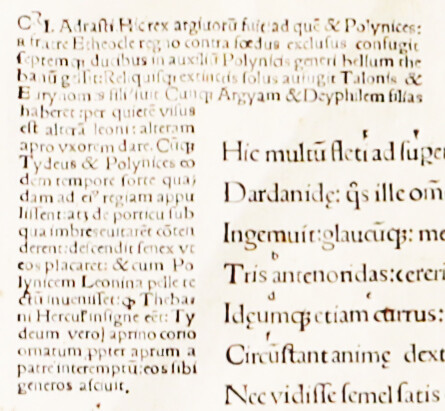These comments are for you if you work in Excel a good deal of the time and would like to see your worksheets reproduced in a book.
Print it.
That’s right. Print your worksheet. The part you want shown in the book. You probably know the size of the book page by now, and I’m guessing it is not 8.5″ × 11″. More likely it is 6″ × 9″ or thereabouts. So set up your page margins to limit the printed area to, say 4.5″ × 7.5″. (On US letter paper, you would do this by making the top and bottom margins 1.75″ and the side margins 2″.)
What you have now is approximately the way your worksheet will look in the printed book. It’s permissible to run the table broadside (so the book has to be turned 90 degrees to read the table). I’m going to typeset your table instead of running it as an image of your actual worksheet, but the amount of type that can be squeezed into the page doesn’t change much when that step is taken. So if the information on your test print is too tiny to read, then it will be too tiny to read in the book as well.
The key thing to keep in mind is that your worksheet can have an enormous number of rows and columns, and you can navigate around it just fine on your computer monitor. But a printed table in a book is limited to the size of the printed page. You can’t just select a large region of your worksheet and shrink it down to page size and expect it to be legible.
What does this mean to you as an author? It means that you have to think about the way information is organized for presentation to the reader. The way you have it organized now may perfectly suit your workaday purposes, but it may not work for your audience. So you need to select and organize the information in a way that will make sense to a naive reader. If you have a great deal of information to present, arrange it into a limited number of columns but allow it to run to a large number of rows. This will be printed on consecutive pages, and readers will understand it. If you instead have a limited number of rows running across a great many columns, there is no convenient way to make that comprehensible in a book. (Foldout pages are expensive and generally not available for short-run books. Trust me. Yours is a short-run book.)
What else? After you create a new worksheet organized for the reader’s benefit, send that to me as an actual Excel file, not as an image or as a PDF. You may also want to place an image of the table in your Word manuscript file, to show how and where you want the table to appear. But that is not sufficient in itself. The Excel file is needed as well, so I have the table contents to manipulate.
One more thing . . . equations! Another problem that sometimes arises is the confusion between Excel formulas and equations. If you are explaining to the reader how to set up a worksheet, by all means cite your formulas just as you have them. But if you are expressing a mathematical truth, use an equation editor, or at least don’t complain when I use one. As an Excel user, you probably don’t think about whether variables are set in italics or not. But in traditional mathematical notation, the choice of type font carries information (real information, defined by Claude Shannon as that which resolves an uncertainty). A letter set in italics is a variable. The same letter set in roman is a constant. In boldface it’s (usually) a vector or a matrix (depending on the context), and so forth. Greek letters are part of the picture, and faking them (using lowercase u instead of Greek μ, for example) is a no-no. In Excel, none of this is relevant. But for an equation on a book page, whether it’s a display equation or part of running text, it’s important. I’ll leave it up to you whether you assign variable names to business quantities or spell them out in their entirety (net profits= . . . vs. P=. . .). Just follow the conventions and everyone will be happy.
Okay, that’s it. Set up the table with the book page in mind and send me the file. Follow mathematical notation conventions. Just doing those three things will make the whole editing and production process much smoother for everyone.
Thank you for your cooperation.
